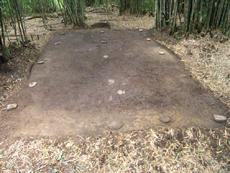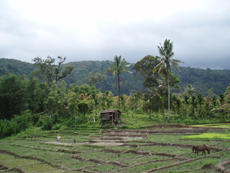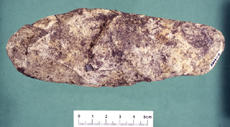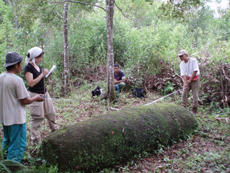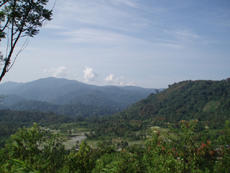Short report of the 3rd archaeological campaign
Short report of the 3rd archaeological campaign in Kerinci/Serempas (Indonesia)
from the 26th of February until the 1st of April 2006
In 2006 the archaeological project in Serempas was continued, funded by the Swiss-Liechtenstein Foundation for Archaeological Research Abroad (SLSA). The team consisted of members from the Free University of Berlin/Germany, the University of Bern/Switzerland, Yale University/USA and from three different archaeological institutions in Indonesia (Jakarta, Palembang, Jambi).
The archaeological research focused the following:
Excavation at Dusun Tinggi
-
Excavation at Dusun Tinggi
-
Test Excavation at Bukit Arat
-
Surveys
|
|
|
|
Fig. 1 |
Fig. 2 |
The excavation was pursued at Dusun Tinggi, an abandoned village site in Serampas. The village entered the historical record in an English report of 1804 in which it is described as the best-fortified villages in the region. It is surrounded by a moat from 1-5 meters in depth which stretches approximately half a kilometre. The protection against animals and inter-village territorial disputes necessitated the construction of this labour-intensive village defence. On the site of approximately 2 hectares thirty 2.5 x 2.5 meter excavation units were created. 16 foundation stones which were aligned in 3 rows of five stones were excavated (Fig. 1). They belong to a large townhall (9 x 14 m) which is recorded in oral history.
Large quantities of artifacts were removed from trenches on sloping hillsides. Potsherds consisted of both locally produced earthenware and foreign stone-ware and porcelain. The earthenware ranged from the coarse, red, materials to thinner, more refined wares. The foreign ceramics were represented by a great variety of sherds originating from Chinese, Vietnamese, and Dutch vessels. Other notable finds included the barrel of a gun, numerous small beads, fused materials (possibly metal slag and fused glass), as well as various types of monies including a VOC coin and ring money. The vast majority of the material seems to indicate that the village was occupied not earlier than the 18th century. It was abandoned around the beginning of the 20th century what coincides with the imposition of the Dutch control over the region in 1903.
|
|
|
|
Fig. 3 |
Fig. 4 |
In addition we also conducted a small test excavation at Bukit Arat, a small mound situated south of Renah Kemumu (Fig. 2). A survey had yielded surface finds of obsidian and an adze. The chipped adze of either late Palaeolithic or early Neolithic origin is so far a unique find in the Jambi Highland region (Fig. 3). Due to the importance of this find a test excavation of two units of 2 x 2 m to a depth of 0.70 m was conducted at the find spot. The finds include grinding stones, a collection of obsidian, and earthenware. The fabric of the potsherds is almost exclusively coarse red with many thin-walled pieces. The few rims found among the potsherds originate from belly-shaped pots similar to the finds of 2005. The material from Bukit Arat shows characteristics of a Neolithic assemblage.
|
Surveys were carried out for two main purposes. One was to complete the documentation of megaliths distributed over the Jambi Highland region (fig.4). The other was the investigation of cave sites in order to get more information about early human occupation. |
|
|
|
|
|
Fig. 5 |
